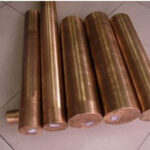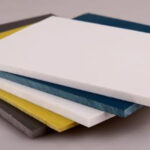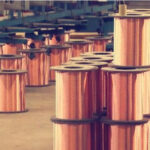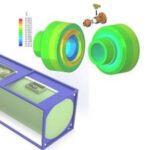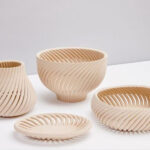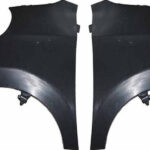At present, the commonly used polishing methods are as follows:
Table of Contents
1. Mechanical polishing
Mechanical polishing is a polishing method that uses cutting, plastic deformation of the material surface to remove the polished convex parts to obtain a smooth surface. Generally, oilstone sticks, wool wheels, sandpaper, etc. are used. Manual operation is the main method. Special parts such as the surface of the rotating body can be used. Use turntable and other auxiliary tools, surface quality
For those with high requirements, the method of ultra-precision polishing can be used. Ultra-precision polishing is the use of special abrasive tools, which are pressed tightly on the processed surface of the workpiece in a polishing fluid containing abrasives for high-speed rotation. Using this technology, the surface roughness of Ra0.008μm can be achieved, which is the highest among various polishing methods. Optical lens molds often use this method.
2. Chemical polishing
Chemical polishing is to make the surface microscopic convex part of the material in the chemical medium dissolve preferentially than the concave part, so as to obtain a smooth surface. The main advantage of this method is that it does not require complex equipment, can polish workpieces with complex shapes, and can polish many workpieces at the same time, with high efficiency. The core problem of chemical polishing is the preparation of polishing liquid. The surface roughness obtained by chemical polishing is generally several 10 μm.
3. Electrolytic polishing
The basic principle of electrolytic polishing is the same as that of chemical polishing, that is, *selectively dissolve tiny protrusions on the surface of the material to make the surface smooth. Compared with chemical polishing, the effect of cathode reaction can be eliminated, and the effect is better. The electrochemical polishing process is divided into two steps:
(1) Macroscopic leveling The dissolved products diffuse into the electrolyte, and the geometric roughness of the material surface decreases, Ra>1μm.
(2) Low-light leveling: Anode polarization, surface brightness is improved, Ra<1μm.
4. Ultrasonic polishing
Put the workpiece in the abrasive suspension and put it in the ultrasonic field together, and according to the vibration of the ultrasonic wave, the abrasive is ground and polished on the surface of the workpiece. Ultrasonic machining has a small macroscopic force and will not cause deformation of the workpiece, but it is difficult to manufacture and install tooling. Ultrasonic processing can be combined with chemical or electrochemical methods. On the basis of solution corrosion and electrolysis, ultrasonic vibration is applied to stir the solution, so that the dissolved product on the surface of the workpiece is separated, and the corrosion or electrolyte near the surface is uniform; the cavitation effect of ultrasonic in the liquid can also inhibit the corrosion process, which is conducive to surface brightening
5. Fluid polishing
Fluid polishing is based on the high-speed flow of liquid and the abrasive particles carried by it scouring the surface of the workpiece to achieve the purpose of polishing. Commonly used methods are: abrasive jet processing, liquid jet processing, hydrodynamic grinding and so on. Hydrodynamic grinding is driven by hydraulic pressure to make the liquid medium carrying abrasive particles flow back and forth across the surface of the workpiece at high speed. The medium is mainly made of special compounds (polymer-like substances) with good flowability under lower pressure and mixed with abrasives. The abrasives can be made of silicon carbide powder.
6. Magnetic grinding and polishing
Magnetic abrasive polishing is to use magnetic abrasives to form abrasive brushes under the action of a magnetic field to grind the workpiece. This method has high processing efficiency, good quality, easy control of processing conditions and good working conditions. Using suitable abrasives, the surface roughness can reach Ra0.1μm.
The polishing mentioned in the plastic mold processing is very different from the surface polishing required in other industries. Strictly speaking, the polishing of the mold should be called mirror processing. It not only has high requirements for polishing itself, but also has high standards for surface flatness, smoothness and geometric accuracy. Surface polishing generally only requires a bright surface. The standard of mirror surface processing is divided into four levels: AO=Ra0.008μm, A1=Ra0.016μm, A3=Ra0.032μm, A4=Ra0.063μm. It is difficult to precisely control the geometric accuracy of parts due to methods such as electrolytic polishing and fluid polishing. However, the surface quality of chemical polishing, ultrasonic polishing, magnetic abrasive polishing and other methods are not up to the requirements, so the mirror processing of precision molds is still mainly mechanical polishing.
Basic procedure of mechanical polishing
To obtain high-quality polishing results, the most important thing is to have high-quality polishing tools and auxiliary products such as oilstone, sandpaper and diamond paste. The choice of polishing procedure depends on the surface condition after pre-processing, such as machining, EDM, grinding and so on. The general process of mechanical polishing is as follows:
(1) Rough throwing
After milling, EDM, grinding, etc., the surface can be polished with a rotating surface polisher or ultrasonic grinder with a speed of 35 000-40 000 rpm. The commonly used method is to remove the white electric spark layer by using wheels with a diameter of Φ3mm and WA # 400. Then there is manual whetstone grinding, and the strips of whetstone are added with kerosene as a lubricant or coolant. The general order of use is #180 —— #240 —— #320 —— #400 —— #600 —— #800 —— #1000. Many mold manufacturers choose to start with #400 in order to save time.
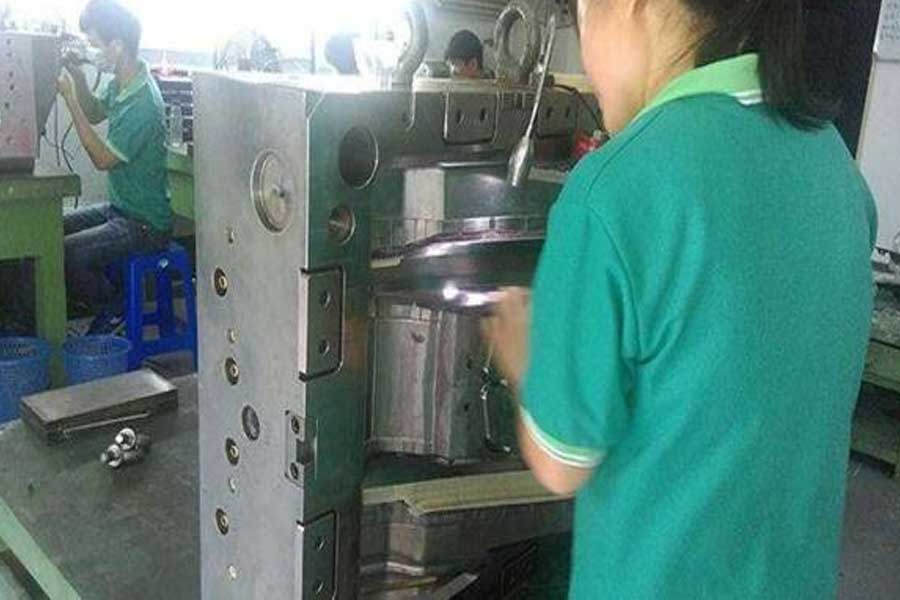
(2) Semi-precision throwing
Semi-precision polishing mainly uses sandpaper and kerosene. The number of sandpaper is as follows: #400 —— #600 —— #800 —— #1000 —— #1200 —— #1500. In fact, #1500 sandpaper only uses die steel suitable for hardening (above 52HRC), not pre-hardened steel, because it may cause burns on the surface of pre-hardened steel.
(3) Fine throwing
Diamond polishing paste is mainly used for fine polishing. If the polishing cloth wheel is mixed with diamond grinding powder or abrasive paste for grinding, the usual grinding order is 9μm (#1800)-6μm (#3000)-3μm (#8000). 9μm diamond abrasive paste and polishing cloth wheel can be used to remove the hair-like wear marks left by #1200 and #1500 sandpaper. Then use sticky felt and diamond abrasive paste for polishing, the order is 1μm (#14000)-1/2μm (#60000)-1/4μm (#100000).
The polishing process with an accuracy requirement of 1μm or more (including 1μm) can be carried out in a clean polishing room in the mold processing workshop. For more precise polishing, an absolutely clean space is necessary. Dust, smoke, dandruff and saliva can all scrap the high-precision polished surface obtained after hours of work.
Link to this article: Commonly used polishing methods for injection molds
Reprint Statement: If there are no special instructions, all articles on this site are original. Please indicate the source for reprinting:https://www.cncmachiningptj.com/,thanks!
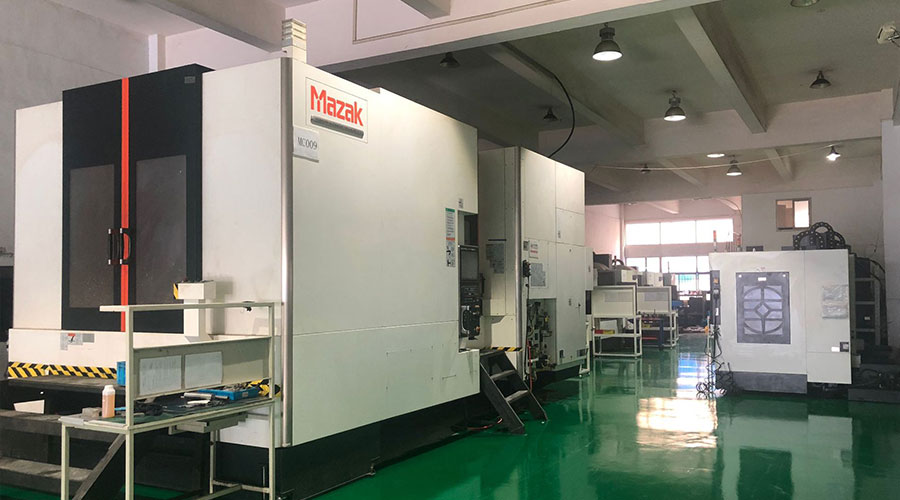 Sheet metal, beryllium, carbon steel, magnesium, 3D printing, precision CNC machining services for heavy equipment, construction, agriculture and hydraulic industries. Suitable for plastics and rare alloys machining. It can turn parts up to 15.7 inches in diameter. Processes include swiss machining,broaching, turning, milling, boring and threading. It also provides metal polishing, painting, surface grinding and shaft straightening services. The production range is up to 50,000 pieces. Suitable for screw, coupling, bearing, pump, gearbox housing, drum dryer and rotary feed valve applications.PTJ will strategize with you to provide the most cost-effective services to help you reach your target,Welcome to Contact us ( [email protected] ) directly for your new project.
Sheet metal, beryllium, carbon steel, magnesium, 3D printing, precision CNC machining services for heavy equipment, construction, agriculture and hydraulic industries. Suitable for plastics and rare alloys machining. It can turn parts up to 15.7 inches in diameter. Processes include swiss machining,broaching, turning, milling, boring and threading. It also provides metal polishing, painting, surface grinding and shaft straightening services. The production range is up to 50,000 pieces. Suitable for screw, coupling, bearing, pump, gearbox housing, drum dryer and rotary feed valve applications.PTJ will strategize with you to provide the most cost-effective services to help you reach your target,Welcome to Contact us ( [email protected] ) directly for your new project.
Link to this article:Commonly used polishing methods for injection molds
Reprint Statement: If there are no special instructions, all articles on this site are original. Please indicate the source for reprinting.:Cnc Machining,Thank!^^

